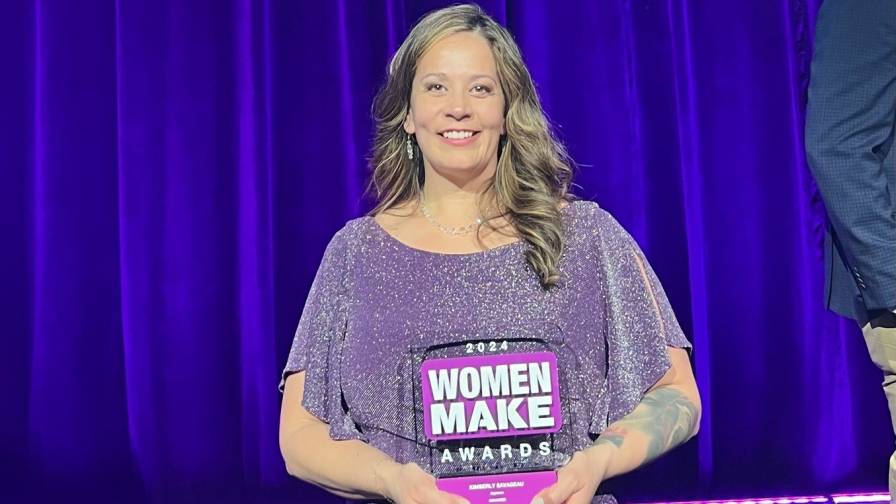Report: Growers Along The Chesapeake Manage Nutrients, Protect The Bay
Along the shores of Chesapeake Bay, farmers like Temple Rhodes, of Centreville, MD, prove farming can be productive and profitable while preserving the Bay. Few regions of the country are more closely scrutinized, and Rhodes is not alone in his efforts to reduce nutrient losses from his crop land.
Yesterday, the USDA Natural Resources Conservation Service (NRCS) released a new Conservation Effectiveness Assessment Project (CEAP) report for the Chesapeake Bay. The assessment indicates that producers in the Bay have significantly increased their conservation measures to improve and protect water quality.
A separate study performed by USDA NRCS and Maryland Department of Agriculture (MDA) to assess the Upper Chester River watershed in Maryland also indicated Bay farmers are taking action.
Complementing the CEAP results, the previous targeted watershed audit of the Upper Chester River found that 97% of the cropped acres had a nutrient management plan with more than 50% of the farmers utilizing multiple practices to manage nitrogen. That assessment was also performed in 2011 using a thorough assessment auditing 53 land owners representing 87% of the watershed acres.
Rhodes has multiple reasons for intensively managing the nutrients he applies to the soil his family depends on to grow corn, soybeans and wheat. As a businessman, he doesn’t want to spend his fertilizer dollars ineffectively. As a grower, he relies on fertilizer to enrich the productivity of the land. And as an avid outdoorsman, Rhodes is serious about the responsibility of taking care of the soil and water resources that enhance his life as well as the lives of the non-farm public.
To achieve his objectives, Rhodes works with Willard Agri-Service, a MD-based agribusiness to implement the 4Rs, fertilizer best management practices selected to apply the right nutrient source, at the right rate, in the right time and in the right place. Willard Agri-Service applies custom liquid fertilizers and crop protectants and offers Chesapeake Bay farmers data collection support and related crop production. Willard Agri-Services has worked closely with Rhodes for many years and believes his farming practices represent the direction many Bay-area farmers are headed.
“Embracing fertilizer best management practices improve yields and profitability of today’s harvests,” says Willard Agri-Service’s Vice President of Sales and Marketing Mike Twining. “These same practices also reduce the loss of nutrients to the Bay by converting ever higher percentages of the applied nutrients into healthy food and fiber for human consumption. Our clients are increasingly adopting practices similar to those on Rhodes farm.”
Rhodes’ farming practices offer insight to the types of practices being implanted in the Chesapeake Bay. To reduce nutrient loss, he never applies fertilizer on the soil surface. A modified strip-till planter enables him to place nitrogen, phosphorus and potassium eight inches below the surface for corn and soybean production. That gets nutrients right into the root zone where they’re readily accessible to plants while helping to eliminate runoff and volatilization. Nitrogen is further protected with a stabilizer added to the fertilizer to prevent loss to groundwater. This strip-till strategy puts the right source of nutrients in the right place resulting in better crop yields.
“The question for us was — can we use the same amount of fertilizer in a smarter way and grow a better crop?” Rhodes said. “We’ve proven that we can. The big bump in yield we’ve seen comes from putting the right fertilizer in the right place — right in the strip, right below the seed.”
Rhodes has measured an 18.6-bushel per acre advantage to the system compared to standard no-till production.
Timing is also important. Using his strip-till rig, Rhodes split-applies fertilizer on his corn ground, placing the nutrients about four inches beneath surface just prior to when the crop approaches its peak nutrient demand.
“It’s a matter of fertilizer efficiency,” he said. “We want to apply only what the plant needs, when it needs it.”
Nutrient application at Rhodes’ Chestnut Manor Farms is site-specific, guided by GPS-linked soil maps that enable Rhodes to match the right fertilizer and seeding rates to reflect the potential of specific productivity environments. GPS guidance systems utilizing RTK provide pinpoint accuracy for fertilizer, chemical and seed placement.
Tissue sampling during the growing season is used to assess plant nutrition status at each stage of development so that Rhodes can further fine-tune fertilizer applications.
In addition to high-tech techniques for managing nutrients, the Rhodes plants forage oilseed radishes as a cover crop to retain nitrogen, phosphorus and potassium through the winter, reduce soil compaction and prevent erosion. Buffer strips and waterways are also relied on to help protect soil and water.
Just as he takes a diversified approach to nutrient stewardship, his family farm is a model of diversification that seeks to make the most of the land Rhodes manages. The Rhodes family has a commercial Angus cowherd and they harvest straw from their wheat crop, transporting it to Pennsylvania where it is used as a growing medium in mushroom production. A passionate sportsman, Rhodes also guides and hosts turkey, waterfowl, sea duck and deer hunts along the Eastern Shore and raises Labrador Retrievers.
Source: The Fertilizer Institute






